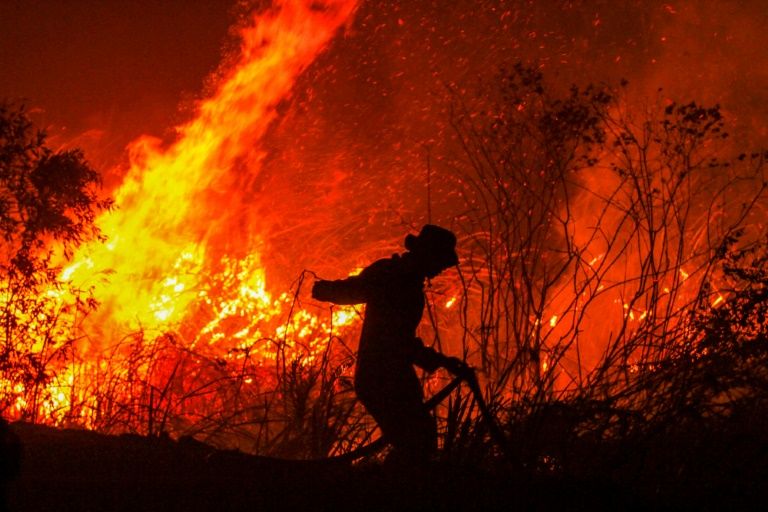Source: Bloomberg, September 19 2019
By Yoga Rusmana
An annual nuisance, stinging smoke from massive wildfires is blanketing parts of Indonesia, Malaysia and Singapore this year on a greater than usual scale. Most of the blazes result from illegal slash-and-burn methods used to clear farmland for cash crops such as palm oil, a technique that persists despite years of government efforts to stamp it out. The haze is not only unhealthy — thousands of people have reported acute respiratory illnesses — but it has a wide impact, disrupting air travel and prompting the closing of schools. Last time it was this bad, in 2015, economic losses in Indonesia alone were estimated at $16 billion.
1. What causes the fires?
Partly it’s due to weather, but mostly it’s man-made. Since the 1980s, planters on the islands of Sumatra and Borneo have used a slash-and-burn technique — 20 times cheaper than employing machinery — to clear land for palm oil, pulpwood and rubber trees. The areas are remote and difficult to police, and the fires easily burn out of control. A weak El Nino weather pattern in the Pacific early this year has meant a longer-than-usual dry season in the area. Prolonged drought dries out leaves in tree crowns, enabling fires to spread quickly across the canopy of tropical forests. Dry undergrowth increases the threat of igniting carbon-rich peat layers in the ground, which burn and smolder for a long time and are tough to extinguish.
2. How much is burning?
Fires can start anytime but worsen in August and September, the height of the dry season. Almost 3,000 hotspots were detected in Indonesia in mid-September, with Sumatra and the Indonesian part of Borneo island, called Kalimantan, accounting for more than two thirds, according to the National Disaster Mitigation Agency. More than 320,000 hectares (1,200 square miles) have burned in the first eight months of the year. In 2015, between June and October, fires burned roughly 2.6 million hectares — an area roughly the size of Rwanda or the U.S. state of Maryland. Researchers from Harvard and Columbia universities linked the toxic haze, which lingered for weeks, to more than 100,000 premature deaths, mostly in Indonesia. That was the worst year since 1997, when almost twice as much land burned.
3. How long will it last?
The wet season isn’t expected to start until late October or November in Sumatra and Kalimantan, which would be about two months later than normal, according to Indonesia’s weather bureau. It may not start in other parts of the vast archipelago until December, raising the prospect of a prolonged haze season.
4. What’s the economic impact?
Indonesia is the world’s top palm oil producer, and the heat from the fires disrupts operations at plantations and mills and delays the ripening of palm fruits. The haze also can slow plant growth by blocking sunlight. Airlines including national carrier PT Garuda Indonesia and Lion Air have to cancel or divert flights, disrupting travel and tourism. The World Bank report that put the cost at 221 trillion rupiah ($16 billion) covered the impact on agriculture, forestry, trade, tourism and transportation, as well as school closures, emergency response and fire suppression and the cost to the environment. Short-term effects of haze exposure on health were included, but not long-term.
5. What’s been done?
After 2015, Indonesian President Joko Widodo imposed a moratorium on new permits for clearing forest and peatland for palm oil cultivation. Combined with educational campaigns and stricter law enforcement, the amount of primary forest lost in protected peat areas in Indonesia went down by 88% between 2016 and 2017, according to the World Resources Institute, despite setbacksin Sumatra — home to endangered tigers and orangutans. The haze in 2015 also led to the formation of Fire-Free Alliance of forestry and agriculture companies and non-governmental groups to fight the menace. Hundreds of villages work with the alliance to form volunteer squads to prevent fires.
Indonesia’s Reach
6. What do Indonesia’s neighbors say?
Malaysia’s ruling party leader Anwar Ibrahim has called the haze “ecological warfare.” Classes were canceled for nearly one in seven Malaysian children. Singapore’s National Environment Agency issued its first “unhealthy” air quality advisory in three years, and has advised residents to reduce prolonged or strenuous outdoor physical exertion. Organizers of Asia’s premier auto-racing event, the Singapore Grand Prix, prepared a contingency plan to deal with reduced visibility. Both countries have called for tougher action against those who start the fires, and have offered help to fight them, an offer turned down by Indonesia, which in a prickly response said it has “more than enough” resources. Indonesia also says some of the fires started on land owned by subsidiaries of firms from Malaysia or Singapore, and has sealed off at least five such plantations. Malaysia is considering a law to hold local firms responsible if they don’t put out fires on their properties outside the country.
7. What else can be done?
Authorities have deployed an additional 5,600 troops and firefighters to crisis areas, bringing the total to almost 15,000. They have filed criminal charges against more than 130 plantation companies and individual farmers for illegal burning this year, which could result in jail terms of as many as 10 years. But that’s likely to be a long, drawn-out legal process. Jokowi, as the president is known, also directed the disaster mitigation agency to expand the scope of cloud-seeding efforts. The agency has deployed three planes to try to induce rainfall over Sumatra and Kalimantan.

